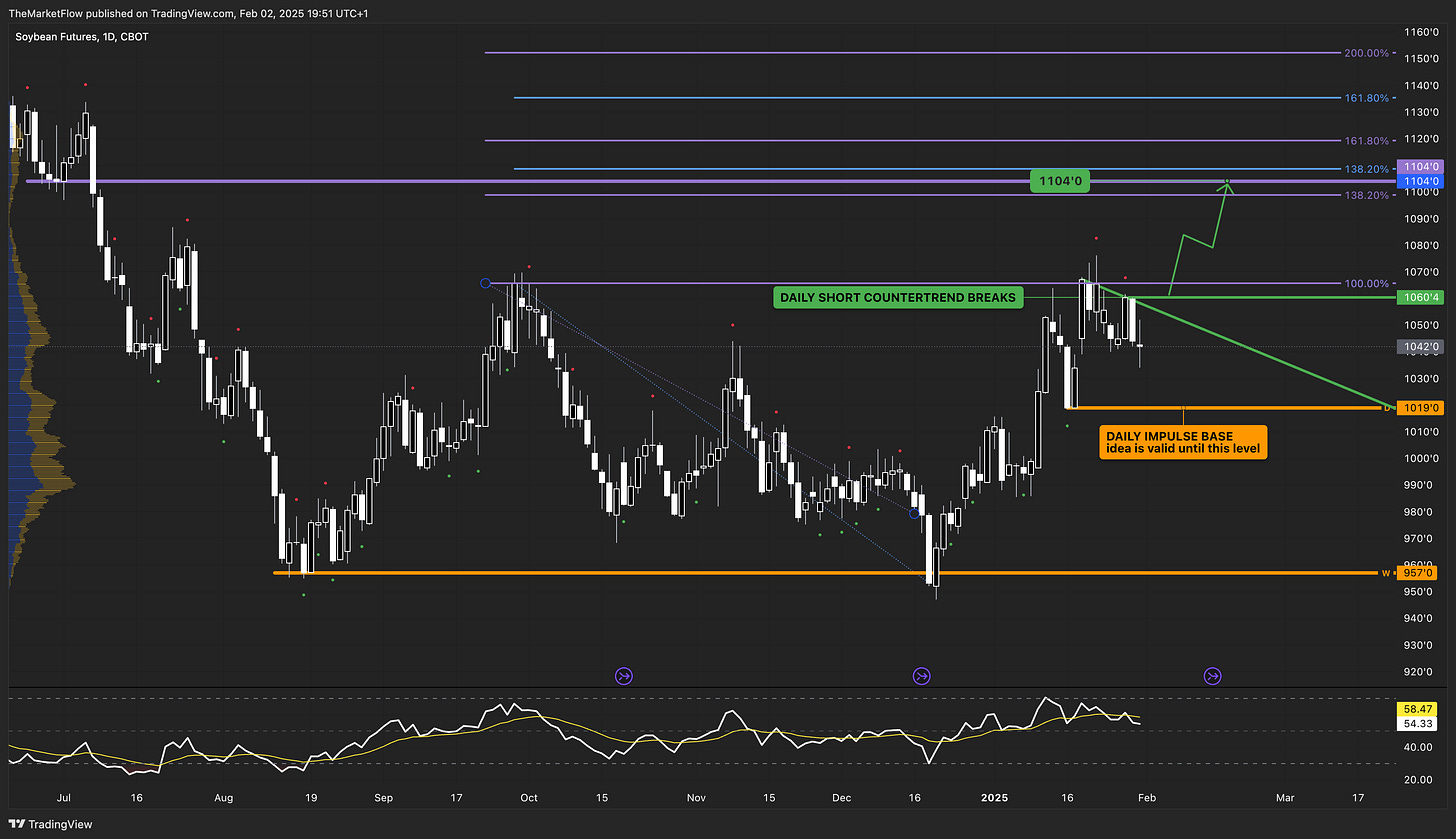Key Chart (Daily)

The market is in a daily short countertrend within the weekly and daily long trend.
Upon a close above this daily short countertrend’s impulse base, the market is back in sync with the weekly, and the next target is the weekly/daily breakdown aligned with the weekly/daily target Fibonacci 138.2 zone.



